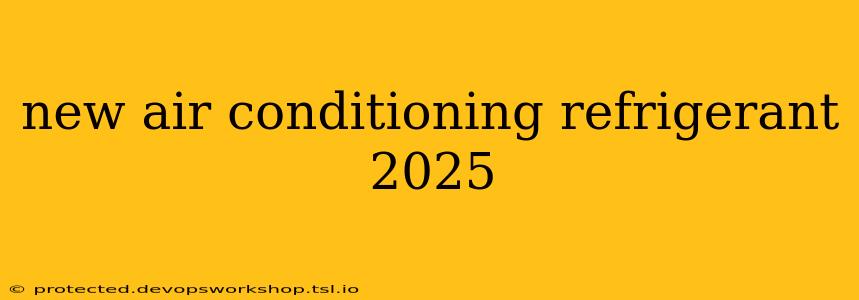The air conditioning industry is in the midst of a significant transition, driven by the urgent need to reduce the environmental impact of refrigerants. Hydrofluorocarbons (HFCs), previously the industry standard, are potent greenhouse gases contributing significantly to climate change. As a result, regulations like the Kigali Amendment to the Montreal Protocol are phasing out HFCs, pushing the industry towards more sustainable alternatives. But what does this mean for 2025 and beyond? Let's delve into the new generation of air conditioning refrigerants.
The Shift Away from HFCs: Why the Change is Necessary
Before exploring the new refrigerants, it's crucial to understand why the shift is so critical. HFCs, while not directly depleting the ozone layer like their predecessors (CFCs and HCFCs), possess a significant global warming potential (GWP). This means they trap heat in the atmosphere, contributing substantially to climate change. The Kigali Amendment aims to reduce HFC consumption by over 80% by 2047, accelerating the search for low-GWP alternatives.
Promising Refrigerant Alternatives for 2025 and Beyond
Several promising refrigerant alternatives are emerging, each with its own strengths and weaknesses:
1. Hydrofluoroolefins (HFOs): A Leading Contender
HFOs are currently the leading contenders to replace HFCs. They boast significantly lower GWPs compared to HFCs, often with near-zero ozone depletion potential (ODP). Examples include:
- R-1234yf: Widely adopted in automotive air conditioning systems, offering a good balance of performance and environmental friendliness.
- R-1234ze: Another popular HFO showing promise in various applications, including refrigeration and air conditioning.
Advantages of HFOs:
- Low GWP: Significantly reduces the environmental impact.
- Good Thermodynamic Properties: Offer comparable performance to HFCs in many applications.
Disadvantages of HFOs:
- Higher Cost: Currently more expensive than HFCs.
- Flammability Concerns: Some HFOs are flammable, requiring careful handling and system design.
2. Natural Refrigerants: An Eco-Friendly Choice
Natural refrigerants, such as ammonia (R-717), carbon dioxide (R-744), propane (R-290), and isobutane (R-600a), are gaining traction due to their extremely low or zero GWP.
Advantages of Natural Refrigerants:
- Zero or Negligible GWP: Environmentally friendly.
- Abundantly Available: Readily sourced and cost-effective in some cases.
Disadvantages of Natural Refrigerants:
- Toxicity and Flammability: Some natural refrigerants are toxic or flammable, requiring specialized safety measures.
- Application Limitations: May not be suitable for all applications due to their thermodynamic properties.
3. Blends: Optimizing Performance and Safety
Refrigerant blends combine different refrigerants to optimize properties like performance, safety, and environmental impact. These blends can mitigate the drawbacks of individual refrigerants, offering a tailored solution for specific applications.
Advantages of Blends:
- Customized Properties: Allows for fine-tuning to meet specific application needs.
- Improved Safety: Can reduce flammability or toxicity compared to individual components.
Disadvantages of Blends:
- Complexity: Requires more sophisticated system design and maintenance.
What to Expect in 2025 and Beyond
2025 will likely see a continued shift towards HFOs and natural refrigerants, driven by regulations and growing environmental awareness. Expect to see:
- Increased Adoption of HFOs: HFOs will likely dominate in many sectors due to their performance and relatively low GWP.
- Growing Use of Natural Refrigerants: Natural refrigerants will see increased adoption in specific niche applications where their environmental benefits outweigh safety considerations.
- Innovation in Blend Technology: Further development and refinement of refrigerant blends will offer optimized solutions for various applications.
Conclusion: A Sustainable Future for Air Conditioning
The transition to new air conditioning refrigerants is a vital step towards a more sustainable future. While challenges remain in terms of cost, safety, and performance, the industry is actively working to overcome these hurdles. By 2025 and beyond, we can expect a significant reduction in the environmental impact of air conditioning, paving the way for a cleaner and cooler future. The ongoing research and development in this field promise further advancements, leading to even more sustainable and efficient cooling solutions.

